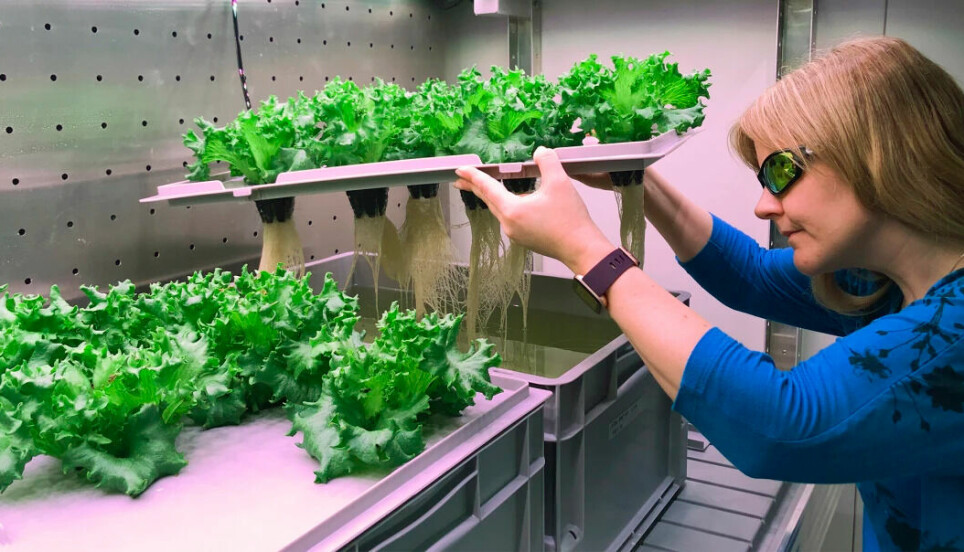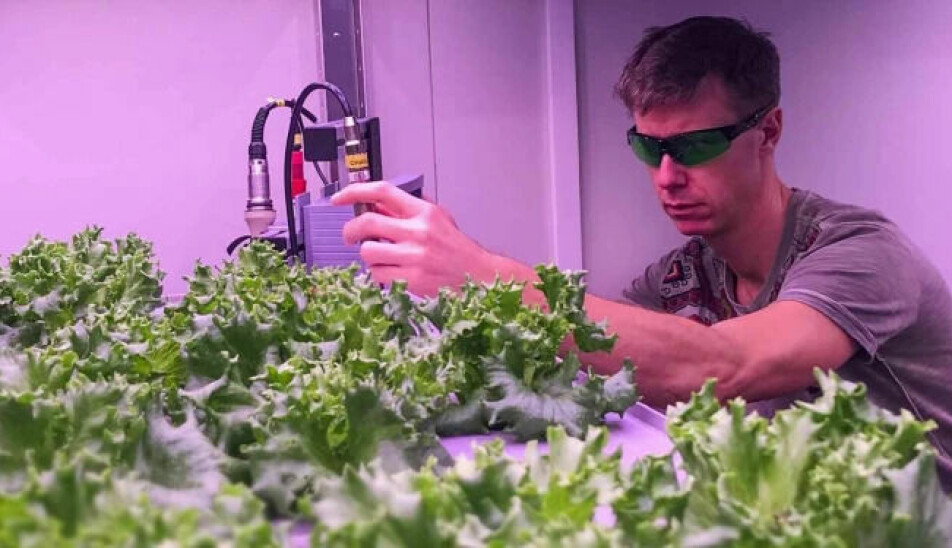
What should astronauts eat on long trips?
Plants grown in space must be part of a closed system.
When we go on trips, food and drink take up a good deal of space in our backpacks.
Now imagine that you are going on a trip that lasts several years. How much, and what kind of food should we bring then?
This is something astronauts have to think about.

Giant packed meals
Øyvind Mejdell Jakobsen is one of those researching food in space. He works at CIRiS at NTNU Social Research.
“Our wish is that the astronauts can travel and live for a long time outside of Earth. For that they need enough food, oxygen, and clean water,” he says.
There are people living on the International Space Station right now. They have to make do with their packed meals because the space station is 400 kilometres away from Earth.
“They either return to Earth or get sent more food when they run out,” he says.
If we are to get to Mars, the trip will be a good deal longer. Maybe several years.
“That backpack would become extremely heavy,” he says.
Must grow food in space
It would be best if food could be grown on the Moon or Mars. And the less waste, the better.
“Once you have taken off in the spaceship it is a long time until you return home again. Therefore, we must try to recycle everything we use. All the water, all the nutrients, and all the oxygen,” says Jakobsen. “Plants are ingenious like that. We can say that they are the opposite of us humans.”
Humans need food, oxygen and clean water. Our bodies get rid of nutrients, carbon dioxide and dirty water. The plants can use this to make food, oxygen and clean water.
“Exactly what we need,” he says.
Space beans
The researchers work with lettuce, potatoes and wheat.
“The next attempt we are working on for the space station will be beans. For this experiment we are building equipment and conducting research on the plants,” Jakobsen says.
They also work with the succulent herb glasswort.
“Glasswort can grow in water that contains a lot of salt. This is important since much of the dirty water will contain a lot of salt, and many common plants may find it difficult to grow and thrive,” he says.
The glasswort can solve two problems. It can both reduce the salt content of the nutrient solution and still be edible despite a high salt content. We humans who live on Earth often consume too much salt.
Astronauts, on the other hand, must make sure they consume enough salt.
The globe is like a spaceship
The plants in space must be able to be part of a closed system with humans, microorganisms, and other plants. One consumes the other's waste and makes what the next one needs. Only what has been brought along can be used, and it must be used in the best possible way.
Jakobsen says that research on the spaceship can be used on our planet as well.
“The globe is actually a bit like a large spaceship. No one is throwing extra nutrients or other resources at us on Earth. We must try to use everything in a good way – also what we have previously considered waste,” he says.
———
Translated by Alette Bjordal Gjellesvik.
Read the Norwegian version of this article on ung.forskning.no
































